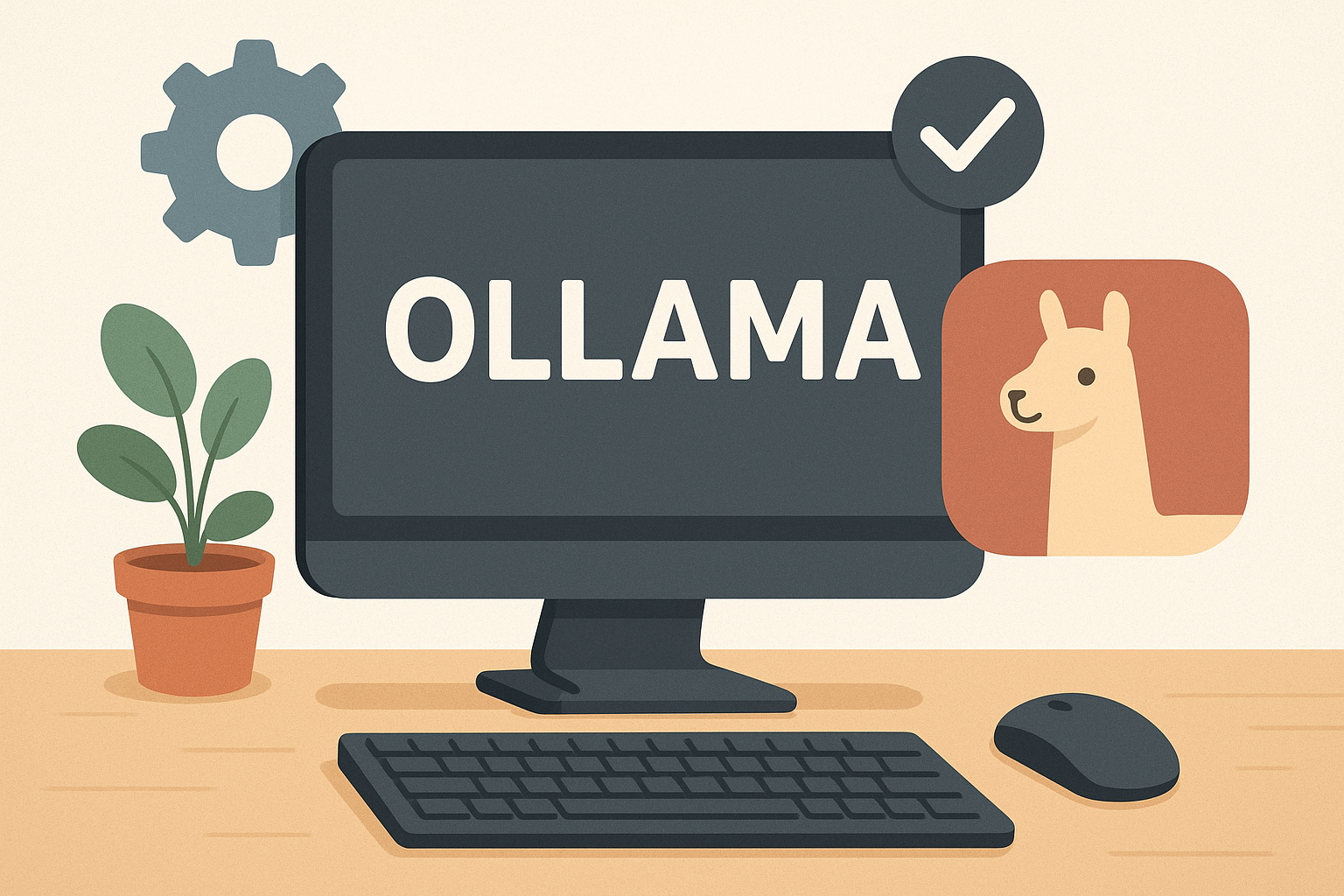So you’ve been playing around with ChatGPT, Claude, and other AI tools online, but maybe you’re starting to wonder: “What if I could run these kinds of models on my own computer?” Well, that’s exactly what Ollama lets you do, and it’s surprisingly easy to get started.
What is Ollama?
Think of Ollama as a tool that lets you download, run, and chat with various large language models (LLMs) directly on your own machine. No internet required once it’s set up, no usage limits, and complete privacy since everything stays local.
The cool thing about Ollama is that it makes running LLMs almost as simple as installing any other app. Behind the scenes, it handles all the complicated stuff like model loading, memory management, and providing a clean interface to interact with the models.
Why Would You Want This?
There are a few compelling reasons to run models locally:
Privacy: Your conversations never leave your computer. If you’re working with sensitive information or just value your privacy, this is huge.
No usage limits: Once you’ve downloaded a model, you can chat with it as much as you want without worrying about hitting daily limits or paying per message.
Customization: You have full control over which models to use and how they behave. Want to try that new experimental model everyone’s talking about? Go for it.
Learning: It’s fascinating to experiment with different models and see how they compare. Plus, understanding how these tools work locally gives you a better grasp of AI in general.
Getting Started: Installation
Mac Users
The easiest way is to head over to ollama.ai and download the Mac app. It’s a standard .dmg file – just drag it to your Applications folder and you’re good to go.
Alternatively, if you’re a Homebrew user, just type “brew install ollama.”
Windows Users
Download the Windows installer from the Ollama website. It’s a straightforward setup wizard that handles everything for you.
Your First Model
Once Ollama is installed, open up your terminal (or Command Prompt on Windows) and let’s grab your first model. I’d recommend starting with Llama 2, which is a solid, well-rounded model:
ollama pull llama2
This will download the model (it’s a few gig, so grab a coffee). Once it’s done, you can start chatting:
ollama run llama2
And just like that, you’re having a conversation with an AI model running entirely on your machine!
A Few Tips
Start small: Some models are absolutely massive. If you’re just getting started, stick with smaller models like Llama 2 7B rather than jumping straight to the 70B versions.
Check your hardware: While Ollama can run on most modern computers, having more RAM definitely helps, especially for larger models. 8GB is workable, but 16GB+ is more comfortable.
Explore the model library: Ollama supports tons of different models. Check out ollama list to see what you have installed, and browse the model library on their website to discover new ones.
Use it programmatically: Ollama isn’t just for command-line chatting. It provides a REST API, so you can build your own applications on top of it. Speaking of building AI apps, if you’re looking for a more comprehensive development environment, Microsoft’s AI Toolkit for VS Code offers seamless integration with both local and cloud models.
The Bottom Line
Ollama democratizes access to powerful AI models by making them incredibly easy to run locally. Whether you’re a developer wanting to build AI-powered apps, a researcher experimenting with different models, or just someone curious about how these systems work, it’s worth checking out.
The best part? It takes maybe 10 minutes to get up and running with your first model. In a world where AI often feels like this mysterious cloud-based thing, there’s something really satisfying about having these powerful tools running right on your own computer.
If you’re ready to build something more complex, learn how to create multi-agent AI systems with CrewAI that can work with your local Ollama models.
